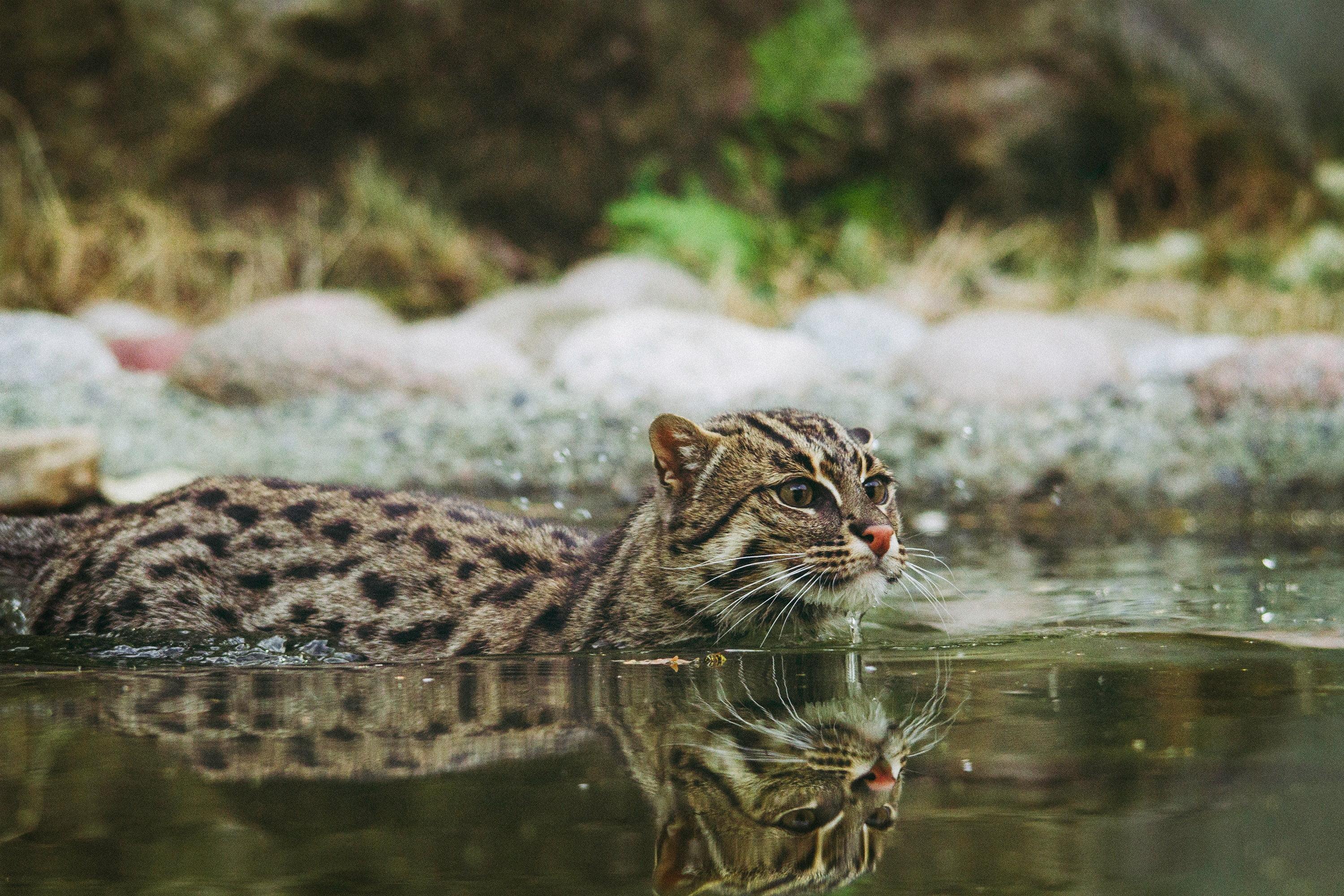
Stealthily navigating the riparian corridors of South and Southeast Asia, the fishing cat is an enigmatic feline perfectly sculpted for an aquatic life. Beneath its benign appearance lies a formidable predator that has intrigued scientists and wildlife enthusiasts alike.
Aquatic Adaptations of the Fishing Cat
The fishing cat prominently stands out among its terrestrial counterparts with a suite of physical characteristics that bespeak its aquatic prowess. The dual-layered fur, consisting of a water-repellent undercoat and longer, protective guard hairs, is the fishing cat's first line of defense against the chill of the waters it frequents. With an elongated muzzle optimized for snaring slippery prey and slightly protruded claws that never fully retract, this cat is always primed for the catch. Though not entirely unique to the species, its partially webbed front paws aid in exceptional swimming ability, while a notably short tail ensures better balance and maneuverability in the aquatic reeds.
The Expressive Visage of the Fishing Cat
The countenance of the fishing cat is a confluence of roundness and elongation, which bestows upon it a seemingly solemn expression. Whether this is an evolutionary facade or simply anthropomorphic interpretation, the fishing cat's distinctive look is unforgettable to those lucky enough to witness it in the wild.
Fishing Cat's Carnivorous Menu

Fish may be the staple of this feline's diet, but its carnivorous palette is broad and opportunistic. Rodents, frogs, crustaceans, molluscs, waterfowl, and even snakes form part of this adaptable predator’s menu. Larger quarry such as civets, deer fawns, wild pigs, and even domestic livestock are not beyond its capabilities. Renowned for its ferocity, the fishing cat has repelled formidable contenders, including packs of dogs, from its catch.
Vital Statistics of the Fishing Cat
The size and weight of the fishing cat can vary, with males reaching a length of 60 centimeters to one meter and weighing between 10-15 kilograms, while females are slightly smaller at 6-7 kilograms. In captivity, their lifespan can extend to 12-15 years. Reproduction sees litters ranging from 1 to 4 kittens, though the average is about 2-3 after a gestation period of 63-70 days. These young cats mature rapidly, reaching independence at around 8.5-9 months.
Social Structure and Distribution
Little is known about the social stratification of fishing cats in the wild; they are believed to be solitary creatures. Their range extends from Pakistan and spans India, all the way to Cambodia and southern China. Distinct populations have been identified across Southeast Asia, including isolated occurrences in Sumatra, the Malaysian peninsula, and Java.
Habitat: Wetlands and Waterways

Wetlands dense with vegetation provide the ideal habitat for fishing cats. They favor swamps, marshes, oxbow lakes, reed beds, and mangroves. Even in the upland reaches of the Indian Himalayas at elevations up to 1,500 meters, these cats are found persistently close to slow-moving water sources.
Contemplating Classification
Given their eclectic mix of traits, the classification of the fishing cat, alongside kin such as the leopard cat, remains a debate among taxonomists. Currently, the scientific moniker viverrina aligns them close to civets. Yet, whether they warrant a separate genus – Prionailurus – continues to be a topic of discussion.
Hunting Strategies of a Riverine Carnivore
The fishing cat exhibits a sophisticated approach to hunting that capitalizes on its aquatic environment. Patience plays a key role as it meticulously waits by the water's edge or perches on an overhanging branch. It may mimic the light touch of an insect upon the water's surface or execute breathtaking dives to seize its prey. Even plunging underwater to ambush waterfowl is within its hunting repertoire—a testament to the fishing cat's adaptability and cunning.
Conservation: Threats and Protection
The fishing cat faces numerous dangers, with certain subspecies teetering on the brink of extinction. Habitat destruction driven by agricultural expansion, pollution, and pesticide contamination poses conspicuous threats. Illegal hunting for skin and meat, along with conflicts at fish farms and with livestock, adds to their decline. Conservation efforts, including breeding programs in the United States and Europe, aim to bolster their numbers and mitigate the risks they face.
The enigmatic life of the fishing cat continues to be a source of fascination and concern for the conservation community. Through continued research and dedicated preservation efforts and public education, there is hope for the future of this unique and awe-inspiring member of the feline family.